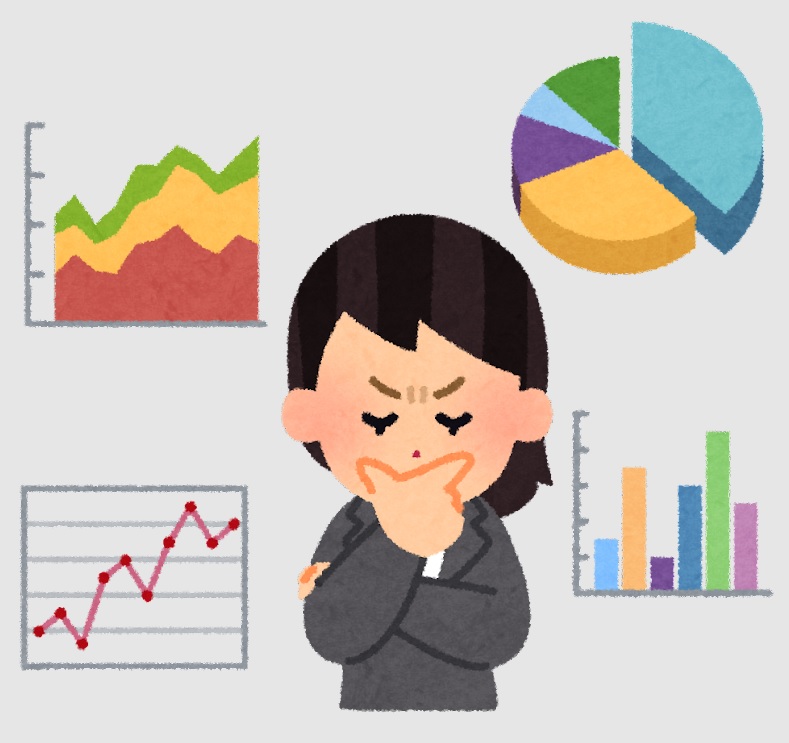管理人オススメコンテンツはこちら
「マーケティング戦略|不安を解消!真実のがんデータ解説」
〜前回のつづき〜
●がんに関するデータを正しく読み解く
(1)がんは2人に1人かかる?
CMなんかでよく言われますよね。
これは生涯でがんと診断される確率です。
男性で65.5%
女性で51.2%
国立がん研究センターが発表している確率です。
これは確かに正しい。
これがだからがんが2人に1人かかると言われる根拠です。
問題は
「いつそうなるのか?」
という事なんですよね。
言い方がすごくずるい。
「2人に1人ががんにかかる時代です!」
と言われたら
「マジで!?」
「うわ!不安だ!」
となるじゃないですか。
問題は『いつ』そうなるのか?という事で
時間軸が無いんですね。
男性の方が確率的には高いんですけど
30歳の人が40歳までにがんになる確率は0.5%です。
100人中1人もいない。
では30歳の人が60歳になるまででも
がんになる確率は7%です。
これはがんにかかるという可能性であって
亡くなってしまった人の数
死亡率ではないという事に注意してほしいです。
がんになっても生きてる人というのは沢山います。
だからがんが2人に1人がかかる時代って
「2人に1人が必ずすぐにかかる」
「いつどうなるかわからない」
みたいな不安をあおって保険に加入させようとする
保険会社のマーケティング戦略です。
ここをちゃんと正しく理解しておきたい。
(2)がんになったら3人に1人亡くなってしまう?
2001年のがんで亡くなってしまう割合というのは31%でした。
実際に3人に1人が亡くなっています。
2022年は
男性25.1%(4人に1人)
女性17.5%(6人に1人)
に低下してきています。
(これが多いか少ないかは置いておきます)
(3)がん患者は増えているのか?
がん患者がドンドン増えているみたいな事を言われています。
実際はどうなのか?
新規がん患者の推移ですが
2001年には56万人だったんですよ。
2019年には100万人になってる。
20年で1.8倍になっています。
不安をあおるには十分な数字ですよね?
がんが1.8倍に増えてるからという数字であれば
がん保険を売る立場であればこのデータを使わない手は無いですよね?
ここで不安をあおりまくって
「ドンドンがんは増えてるんですよ!」
とか言えるだろうという気がしますけど
ではなぜ増えているのでしょう?
〜〜〜つづく〜〜〜
Special Thanks college president Ryo.
●おまけ
≪≪Chat-GPTくんによる要約≫≫
まとめ:
- がんに関するデータを正しく読み解くことが重要。
- がんは2人に1人かかるとされるが、これは生涯での確率であり、年齢によって変動する。
- がんになったら3人に1人が亡くなるとされているが、実際は割合が低下している。
- がん患者は増えているが、数字だけではなく背景を考慮する必要がある。
前回の議論では、がんのデータを正しく理解することが重要であることが強調されました。例えば、がんにかかる確率は一般的に2人に1人と言われますが、これは生涯での確率であり、年齢によって変動します。また、がんにかかっても必ず亡くなるわけではなく、実際の割合は低下しています。さらに、がん患者の増加という数字だけではなく、その背景や要因も考慮する必要があります。これらの情報を正しく理解し、不安をあおる情報に惑わされないようにしましょう。
≪≪Chat-GPTくんによる英訳≫≫
〜Continuation from Last Time〜
● Properly Understanding Cancer Data
(1) Does cancer affect one out of two people?
You often hear this in commercials, right? This refers to the probability of being diagnosed with cancer in one’s lifetime.
For men, it’s 65.5%. For women, it’s 51.2%.
These are probabilities announced by the National Cancer Center. It’s indeed correct. This forms the basis for saying that one in two people will get cancer.
The problem is when will this happen? The phrasing is quite misleading.
“If one in two people get cancer in this era!”
If someone says that, you’d react with, “Seriously!?” “Wow, that’s unsettling!”
The issue is the lack of a time frame. While men statistically have a higher probability, the chance of a 30-year-old getting cancer by age 40 is 0.5%. So, it’s practically non-existent.
Even by the time a 30-year-old reaches 60, the probability of getting cancer is 7%.
It’s important to note that this represents the likelihood of getting cancer, not mortality rates. There are many people who survive cancer.
Therefore, the idea that one in two people will get cancer implies an immediate risk, an uncertainty of when it might happen. It’s a marketing strategy by insurance companies to induce anxiety and encourage insurance enrollment.
It’s essential to understand this properly.
(2) If you get cancer, does one out of three people die?
In 2001, the mortality rate from cancer was 31%. So, indeed, one out of three people died from it.
By 2022, it has decreased:
For men, it’s 25.1% (one in four). For women, it’s 17.5% (one in six).
Whether this is high or low, let’s put that aside for now.
(3) Are cancer patients increasing?
It’s often said that the number of cancer patients is rapidly increasing.
What’s the reality?
Looking at the trend of new cancer patients:
In 2001, it was 560,000. In 2019, it reached 1 million.
That’s a 1.8-fold increase over 20 years.
It’s a sufficiently alarming figure, isn’t it?
If cancer is said to have increased 1.8 times, then from the perspective of selling cancer insurance, there’s no reason not to use this data.
It seems plausible to capitalize on this and spread anxiety by saying, “Cancer is increasing rapidly!”
But let’s take a moment to consider.
Special Thanks OpenAI.


